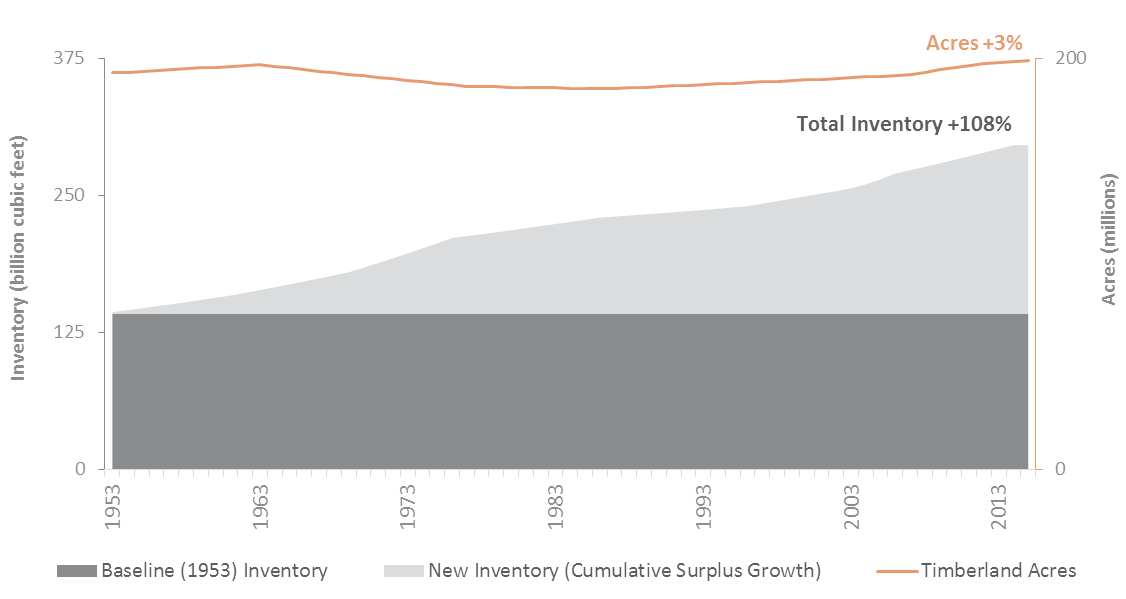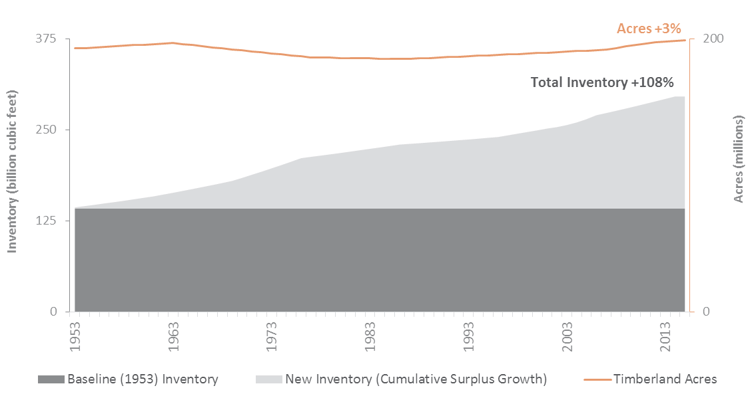2 min read
USIPA Cites Forest2Market Study in Rebuttal of Anti-Biomass, Fear-Based Film
Forest2Market
:
March 22, 2019

The U.S. Industrial Pellet Association (USIPA) recently published a thorough and well-researched rebuttal contesting the misinformation in a new anti-biomass film titled ‘Burned.’ Much of the fact-based information USIPA leverages against the film’s emotionally-charged rhetoric comes from Forest2Market’s landmark 2017 study, Historical Perspective on the Relationship between Demand and Forest Productivity in the US South, which demonstrates that growth in demand for forest products (i.e., lumber, paper, packaging and biomass) has led to greater forest productivity and a significant increase in the amount of forest inventory available for storing carbon.
Key findings of the study include:
- Rising demand for forest products increased removals from timberlands. As US population and GDP grew in the last half of the twentieth century, Americans built and furnished more and larger homes and consumed more paper and packaging. Annual timber removals nearly doubled by 1996, and were 57 percent higher in 2015 than they were in 1953.
- The forest products industry and landowners responded by increasing the productivity of their forests. To ensure their mills would have a stable, high-quality source of supply, forest products companies invested heavily in research to promote forest productivity by improving forest management practices. The result was a 112 percent increase in total annual timberland growth between 1953 and 2015.
- Increased demand has not depleted forests. The number of timberland acres has remained stable, increasing by 3 percent. At the same time, total inventory has doubled (+108 percent, from 142.1 to 296.1 billion cubic feet) because growth has outpaced removals.
- Statistical analyses show that increased demand is associated with more acres, better growth and larger inventories. Regression models that use removals to predict these measures of forest productivity are statistically significant and explain 65-90 percent of the variance in acres, inventory and growth.
- Urbanization, not increased demand for forest products, is the biggest threat to forests in the United States. Between 1982 and 2012, development was responsible for almost half (49.2 percent or 17.7 million acres) of all forestland that converted to other uses in the United States. By contrast, only 1.2 percent (0.5 million acres) of land that converted to forests during this period was previously developed.

The film relies not on the kind of exhaustive research and data-backed analysis published in Forest2Market’s study, but rather on haggard techniques, and cliché imagery and arguments. USIPA notes that “The film presents an industry freely cutting swathes across ancient, sensitive woodlands, ‘destroying forests, biodiversity and making climate change worse.’ And being paid ‘disproportionately large amounts’ to do so.”
USIPA continues, “The truth is that this film is not just unbalanced – it’s completely biased and dangerously wrong. It paints a deeply inaccurate picture, basing its narrative on flawed assumptions about how forestry operates and how US forests over recent years and decades have performed.”
When it comes to forests, environmental and economic concerns can often seem irreconcilable. Those unfamiliar with forestry and silviculture practices oftentimes approach this subject believing that there is either one advantage or the other, but not both. This simply isn’t true. Forest2Market’s study illustrates that environmental and economic sciences can work together. Keeping forested lands forested is the goal for both concerns; what is good economically for rural communities and the timber industry is also good for the nation’s forests and environment.
Scientists in forest-related industries and groups such as the National Council on Air and Stream Improvements (NCASI) recognize the difference between biogenic and non-biogenic sources of energy. Combusting fossil (non-biogenic or below ground) sources of carbon (coal, oil, natural gas) adds to the carbon dioxide content of the atmosphere because these resources are “captured” and released from within the earth. Combusting renewable woody biomass (biogenic or above ground) carbon, however, adds little to no net carbon dioxide to the atmosphere when considered over the long-term. As long as we are not depleting forest inventories, which we are not, this biogenic carbon is reabsorbed by new plant life as it grows; it is a sustainable and cyclical process.
- The full text of USIPA’s rebuttal (with references) is available at its website: Is the 'Burned' Film Believable?
- Forest2Market’s 2017 study is available on Forest2Market’s website: At a Glance (7 pages), Executive Summary (26 pages) and full report (104 pages).




